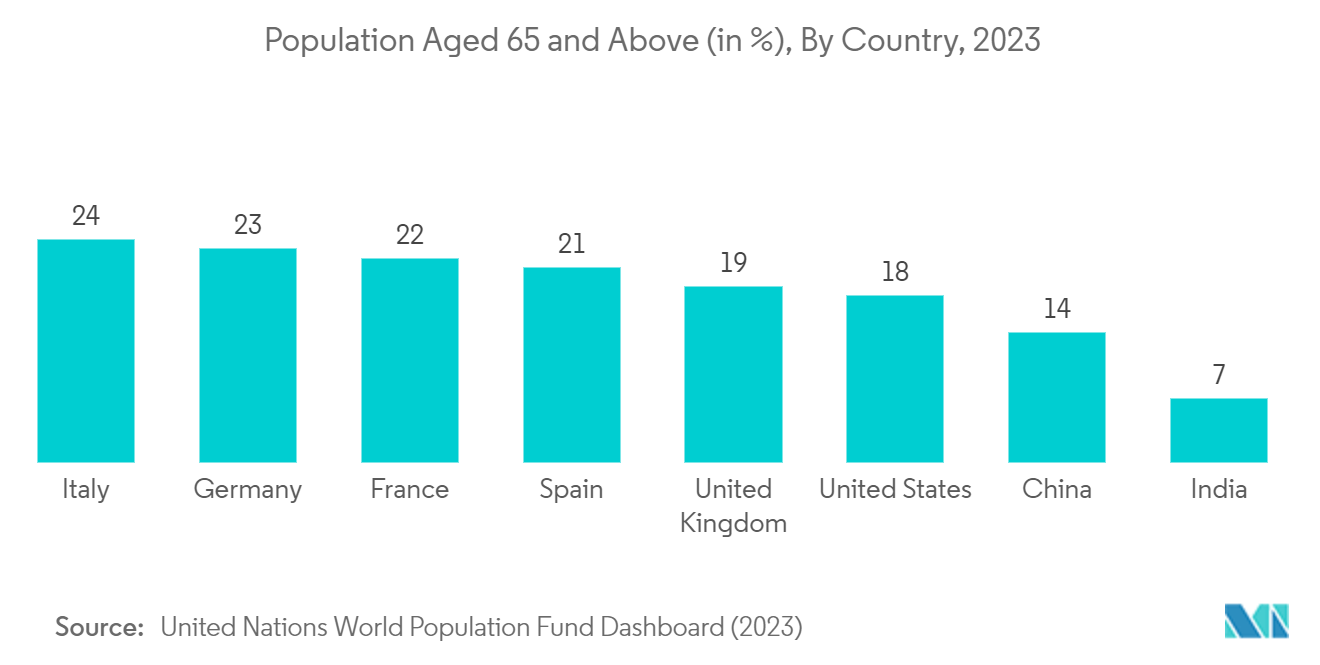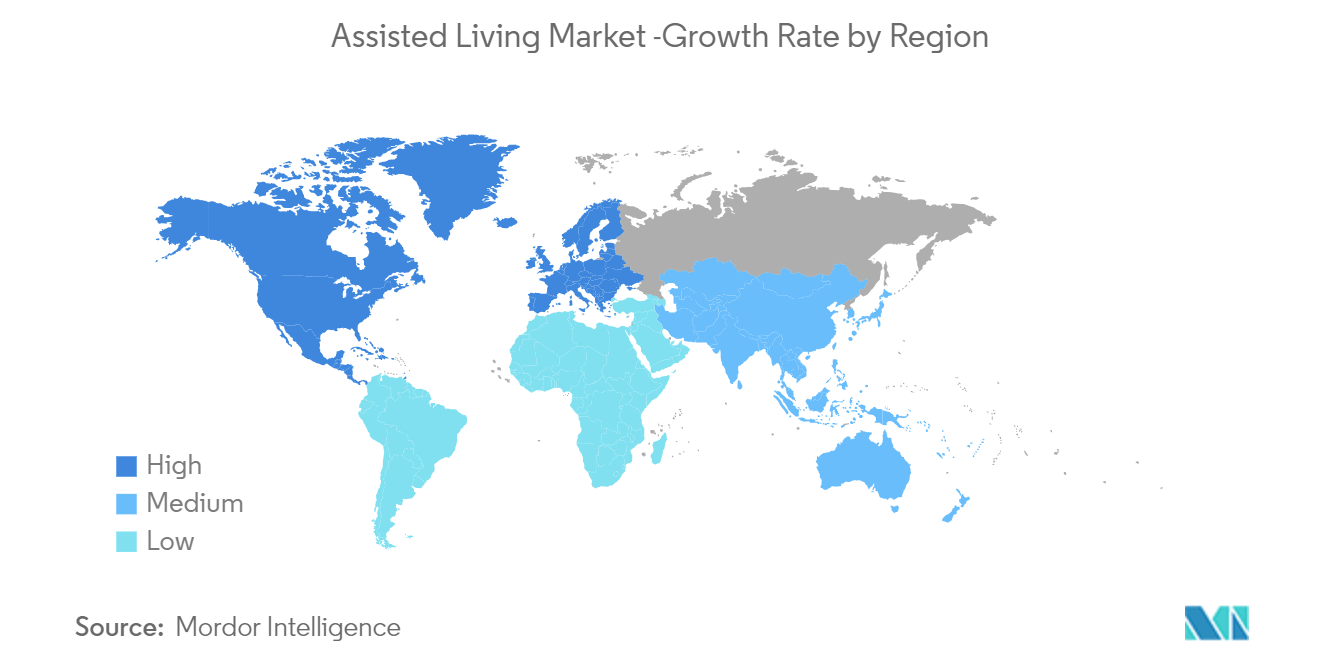Market Trends of Assisted Living Industry
The Medication Monitoring Segment is Expected to Hold a Significant Share Over the Forecast Period
The medication monitoring segment is experiencing significant growth due to several interconnected factors. As the aging population increases, many residents require assistance in managing multiple medications, leading to a heightened need for effective medication monitoring. This service aims to ensure medication adherence, prevent errors, and improve health outcomes for seniors.
As the population ages, many residents in assisted living facilities require assistance with managing multiple medications. This creates the demand for services that ensure proper medication adherence, reducing the risk of errors and improving health outcomes. For instance, as per India Aging Population Report 2023, the elderly population (aged 60+) is projected to rise to 20.8% by 2050, equating to roughly 347 million individuals, up from 10.5% (about 149 million) in 2022. Notably, this demographic is set to outnumber the child population by 2046. Thus, the growing aging population, which is prone to many chronic diseases, is anticipated to bolster the segment’s growth.
The aging population suffering from multiple chronic conditions requires effective medication management services to help prevent complications associated with missed or incorrect doses, thereby enhancing the overall quality of care provided in assisted living facilities. For instance, as per an article published in NCBI in October 2023, in the United States, over half of adults aged 65 and older reported having one or more of ten prevalent chronic conditions: arthritis, cancer, COPD, heart disease, asthma, diabetes, hepatitis, hypertension, stroke, and kidney disease. Projections indicate that the number of individuals aged 50 and above with at least one chronic disease will surge by 99.5%, rising from 71.5 million in 2020 to an anticipated 142.7 million by 2050. In 2022, about 29 million US adults acknowledged having three or more chronic conditions. This creates the demand for services that ensure proper medication adherence, reducing the risk of errors and improving health outcomes.
Further, increased regulatory scrutiny around medication management in assisted living facilities has led to a greater emphasis on compliance, which is likely to support the segment’s expansion. For instance, in May 2023, Minnesota and Texas updated their regulations to ensure that assisted living facilities maintain comprehensive medication management policies. These policies include requirements for assessments by licensed professionals and protocols for monitoring medication administration, ensuring a higher standard of care. Such supporting regulation is expected to increase the demand for medication monitoring services for assisted living people, boosting the segment’s growth.
Thus, the growth of the medication monitoring service segment in the assisted living market is driven by the rising complexity of healthcare needs among seniors, technological innovations, regulatory requirements, and increased family awareness.

North America is Expected to Hold a Significant Market Share Over the Forecast Period
The North American assisted living market is experiencing significant growth driven by several key factors. As the aging population increases and chronic health conditions become more prevalent among older adults, the demand for specialized care and monitoring in assisted living facilities rises. Additionally, government initiatives to enhance senior care accessibility, coupled with technological advancements like telehealth and remote monitoring, are pivotal in fueling market growth.
The increasing number of elderly individuals, particularly baby boomers, is a primary driver. As this demographic ages, the demand for assisted living facilities that offer support with daily activities is rising. For instance, as per Population Reference Bureau Statistics 2024, around 58 million Americans were aged 65 and older in 2022. This number is set to surge to 82 million by 2050, marking a 47% increase. By 2050, this age group is anticipated to make up 23% of the total US population, a rise from 17% in 2022. The median age of the US population climbed to 38.9 years in 2022, a shift largely attributed to baby boomers. Projections indicate that by 2030, 20% of Americans will be 65 or older.
The increasing demand for and adoption of assisted living facilities in the region are expected to contribute to the growth of the overall market over the forecast period. For instance, according to data from the National Investment Centre for Older Persons 2023, occupancy rates were at an all-time high in the elderly housing and care industry. With an occupancy rate of 82.1% as of August 2023, assisted living had the highest quarterly increase in all categories of care. The occupancy rate was 85.2% in the area of senior living, which covers both assisted and independently lived accommodation and memory care.
There are approximately 32,820 assisted living communities in the United States, according to the most recent data from the National Center for Assisted Living. Almost 1.28 million assisted living beds are registered with the National Centre for Active Living. As the population of people over 65 is expected to almost double by 2060, care facilities are also expected to grow similarly. Thus, increasing demand for assisted living facilities is expected to drive the market’s growth over the forecast period.
Thus, the growing geriatric population, increasing demand for assisted living facilities, and increasing adoption are likely to spur market growth over the forecast period.


